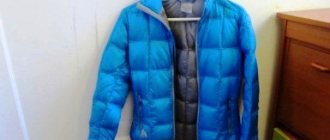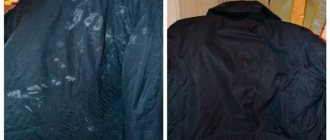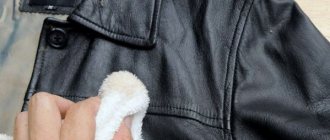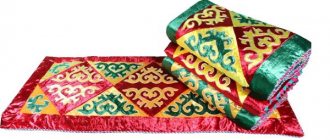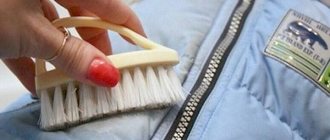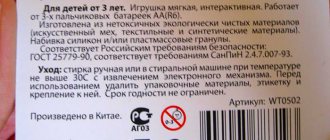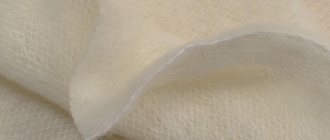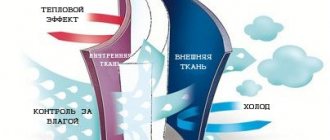Down jackets are the most popular clothing for the cold season. Despite their lightness, they perfectly warm, protect from the wind, and are indispensable during winter rain or snowfall. The advantages of down jackets largely depend on their filling. Synthetic fibers (holofiber, Thinsulate, Isosoft, synthetic down, etc.) are used for insulation in clothing. Another option is to use natural materials (wool, down, which is often supplemented with feathers). When choosing a product, you need to take into account the properties and qualities of various insulation materials. We will tell you what duck down insulation is, whether it is warm, and how many degrees it retains heat.
Which down is better - goose, swan, duck?
a down jacket (or down jacket) has excellent heat-insulating properties. As we know from school, air is a very poor conductor of heat, which means the more air the jacket retains, the longer the heat coming from the body will remain under the clothes, and the cold winter air will not be able to get inside. Therefore, before you buy a down jacket, be sure to ask the seller what filler was used by the manufacturer in the manufacture of the down jacket you have chosen.
High-quality down jackets are those that contain goose, swan, duck or eider down. The latter has the best ability to retain heat, because Eiders are diving ducks that live in the Arctic. Thanks to their down, birds do not freeze even in the most severe frosts. However, due to the high difficulty of extracting such down, down jackets made from eiderdown are very expensive, and they are very difficult to find.
"Down" dictionary (glossary)
When searching for down jackets in online stores in the USA and Europe, you will find our small dictionary-glossary of English words and terms most often used in product descriptions useful. We also recommend using online web page translators, such as Google Translate.
Down Jacket (for man or woman, kids or youth) – down jacket (for a man or woman, child or teenager)
- parka - down parka, jacket with a hood
- puffer - down bomber jacket (dutik), the most common style of down jacket
- coat (medium or long) - down coat (female), comes in medium and long styles
- vest – sleeveless down vest
Insulation (goose down, duck down, 550-850 Fill, 80/20, 90/10, 60/40) – insulation (goose, duck down, down elasticity value, down-to-feather ratio in %).
Body liner (Lining) - lining material.
Shell – fabric, the top covering of a down jacket, made from both natural and synthetic fabrics or a mixture of both.
- membrane - multi-layer membrane fabric, has a high density and weight, can have different brand names - Gore-Tex, HyVent, etc.
- DWR treated/covering - coating of the upper fabric with a waterproof compound.
- ripstop - fabrics with a special reinforcing weave structure.
Windproof (block wind) - windproof.
Waterproof - waterproof.
Hood - hood.
Cuffs (soft, rib-knit inner) – cuffs (inside with a soft, knitted insert).
Detachable (hood, ruff, skirt, fur) – removable part (hood, collar, skirt, fur).
Adjustable (hood, gaiter/throat, cuffs, cord waist&hem) – adjustable/contractible parts (hood, neck, cuffs, drawstring for tightening the waist and bottom hem).
Fur (natural/genuine or faux) – fur (natural or artificial) as a finishing element.
Zipper (external, internal, two-way) – zipper lock (outside, inside, both ways), prefer YKK locks.
VELCRO closure – Velcro
Pockets (external, internal, security, hand warmer, dual entry, zip-off) – pockets (external, internal, secret, for warming hands, with double access, with a zipper)
Fit (regular, slim, relaxed) – fit, cut (regular, tight, loose fit - usually runs too big).
Bulky – voluminous, baggy.
Overal length – the total length of the down jacket.
Weight (light, medium, heavy) - weight (light, medium, heavy).
Wash (machine or hand) – washing (machine or hand).
Number of layers in a down jacket
Down jackets come in two-layer and single-layer varieties. If you are an outdoor enthusiast, skier, or just like to move a lot, you need a single-layer down jacket. Such jackets retain heat perfectly down to -10 .. -15 degrees. You won't overheat in them and they are more comfortable in size.
If you often have to be outside for a long time, you don’t move much and you have a harsh climate, you need double-layer down jackets. Be sure to check with the seller how many layers of fluff are in the product you choose. It is not always easy to do this yourself, therefore, in order to avoid becoming a victim of a counterfeit, it is better to buy down jackets in stores that inspire trust.
Step. Filler density
| Density | Who is it suitable for? |
| Soft |
|
| Average |
|
| Elastic |
|
Looking at the label of the down jacket
When purchasing a down jacket, carefully study its label. Here's what you can see on it:
- Down – this inscription means that the jacket uses down filling.
- Feather - feather. Keep in mind that it is almost impossible to find products made from 100% down, so if you are assured that a jacket is 100% down, and its price is below 20,000 rubles, they are most likely trying to deceive you.
- Products with the following inscriptions on the label: Polyester
(polyester),
Wool
(wool),
Cotton
(cotton) are not worth buying, unless of course you change your mind about buying a down jacket and decide to buy a padded jacket or a jacket with padding polyester.
In general, when purchasing any thing, you should always consider it in great detail. If threads are sticking out of the product, traces of glue are visible, the fittings are stuck, think about whether you should trust such sellers and the store as a whole.
Step. Material selection
| Property\Fabric | Teak | Cotton | Satin | Satin jacquard | Batiste | Cashmere cambric | Silk | Twill |
| Breathes | ♥ | ♥ | ♥ | ♥ | ♥ | |||
| Soft | ♥ | ♥ | ♥ | ♥ | ♥ | |||
| Elasticity | ♥ | |||||||
| Smoothness | ♥ | ♥ | ♥ | |||||
| Durability | ♥ | ♥ | ♥ | ♥ | ♥ | ♥ | ♥ | |
| Doesn't release fluff or feathers | ♥ | ♥ | ♥ | |||||
| Naturalness | ♥ | ♥ | ♥ | ♥ | ♥ | |||
| Doesn't rustle | ♥ | ♥ | ♥ | |||||
| Dense | ♥ | ♥ | ♥ | |||||
| Matte | ♥ | |||||||
| For sensitive skin | ♥ | |||||||
| Peculiarities | Ideal for a gift, looks expensive | Suitable for children and gentle ladies with sensitive skin |
Geese are flying, ducks are flying...
White as snow, stuffed like fur. The answer to this riddle is simple. This is, of course, a goose, which, like the duck, has long been present in the folklore of almost all countries of the world.
People have been using the amazing thermal insulation properties of goose and duck down for a long time. Information about domestic geese and ducks has been known since antiquity. All birds have down feathers, including chickens, but they have nothing in common with the down of waterfowl.
Goose and duck down still remains one of the most valuable natural fillers and insulation materials.
Major pillow manufacturers
Both experienced manufacturers and new participants in the bedding accessories market work in this production segment.
- TOGAS ROYAL.
Greek company operating since 1926. It features very high quality bedding. The price of the pillow is 11-12 thousand rubles. - Sleep Professor Therapy L,
USA. Anatomical pillows made of white goose down, double covers. Cost – 6 thousand rubles. - GRASS FAMILY OPTIMA FAMILIE DOWN.
Austrian company, manufacturer of anatomical pillows with a three-chamber system. The average cost of a product is 7 thousand rubles. - NPK Kariguz.
The company was founded in 1991. One of the European leaders in the production of beds with natural filling. The cost of the product is in a wide range, depending on the components, size, material, ranging from 500 rubles to 13 thousand. - "Light dreams."
Product brand. For more than 10 years on the Russian market, they have been producing products with goose and swan down. Prices vary, depending on the size and filling, from 1000 rubles and above. - Belashoff.
Shchigrovskaya Feather and Down Factory LLC. A large Russian manufacturer of down pillows and products with vegetable fillings. The average price of down products is 2000 rubles.
Subtleties of care
The safest option for cleaning natural down products is to entrust it to professionals. Care at home must comply with the manufacturer's recommendations - they must be indicated on the label.
Items filled with down can be washed by hand or machine. Maximum water temperature 30°C, delicate mode only. Use liquid detergent. Spin is not used. When the water has drained, the product is laid out horizontally. Dry it in a ventilated area or outside in the shade, shaking it periodically. Direct sunlight or heating devices are excluded.
If your down jacket contains duck down, the filling may clump when washed. Tennis balls will help prevent this. It is enough to place a few pieces in your pockets or drum of the machine. The same technique is used when washing a duvet.
For products with natural filler, annual dry cleaning is recommended. Antibacterial and anti-mite treatment is important for user safety.
DWR processing
Most outerwear is coated with DWR (Durable Water Repellent Treatment) . The DWR treatment is a polymer applied to the face of the fabric that creates microscopic “pegs” or “spikes”. These pegs cause the water droplets to curl and roll off the jacket instead of lingering on the fabric and being absorbed into it. So when you see water running off your jacket, you know it's thanks to DWR.
Unlike membranes, which are completely waterproof, DWR has a limit to its effectiveness. As a general rule, you can count on DWR to keep you dry in light rain or snow. Dirt, grease, smoke, and sprays can destroy the pegs formed by the impregnation, thereby reducing the effectiveness of the coating over time. Washing and drying the jacket will restore the DWR, and a number of impregnations and special products allow you to independently update the waterproof layer.
HYBRID INSULATIONS
To combine the advantages of down and synthetic insulation, some manufacturers create hybrid insulation in jackets. In these products, synthetic insulation is placed in areas that are most likely to get wet, such as the shoulders, sleeves, collar and hem. Down is placed around the body for maximum warmth.
| Men's jackets with hybrid insulation | Women's jackets with hybrid insulation |
Waterproof and breathable membranes
For maximum protection from the elements, you need a jacket with a waterproof and breathable membrane. Fabric designed using such a membrane is completely waterproof, but at the same time allows water vapor to escape. This way, the fabric seems to “breathe” when you start to sweat.
GORE-TEX® is the industry's gold standard for waterproof and breathable technology, but there are many similar products on the market now with an equally high level of quality (Membrain®, NanoPro®, Dermizax®, Pertex® Shield+, others).
Service life
Clothes and blankets filled with goose down can last up to 20 years. But it is recommended to change bedding (pillows and blankets) every few years (or clean it once a year), as they absorb all the substances that are released through human skin.
Thanks to modern technologies, down and feather filling is a very high-quality and environmentally friendly material. With proper care, products with it will last a very long time.
© 2021 textiletrend.ru
FEEL POWER
There is a special indicator of the quality of down and feather filler - the FEEL POWER index (the higher the better).
It shows how resilient the fluff is and how capable it is of recovering from compression.
If the index value is 750 or higher, this is fluff of exclusive quality, it is collected manually and only in the spring from the chest part of the bird, which is constantly in selective housing conditions.
An indicator below 400 indicates a very low quality of the filler; such fluff was collected from a dead bird.
On a note
The degree of elasticity also determines how many degrees the insulation effectively protects from the cold. For example, duck down in a down jacket with a high FEEL POWER index will provide comfort down to minus 30-35 degrees and even lower.
Production
The total number of processing stages and operations that fluff goes through is about eighteen.
- The first stage is considered to be raising waterfowl.
- Down is collected from a living bird at a certain period.
- After collection, it is weighed and the quality and degree of moisture are determined, then dried, dusted, sorted and down and feather mixtures are made.
- Then these mixtures are washed in machines with special detergents, squeezed out in centrifuges to a moisture content of 45-50%, and fed into drying machines, where they are finally dried with hot air (at a temperature of 80-120 degrees). Sometimes hot steam cleaning is used.
- Using a fan, the fluff is fed into a collector and pressed into bales.
On a note
All raw materials must be tested and veterinary certificates are issued for them. If the fluff comes from disadvantaged areas where poultry diseases occur, it undergoes mandatory disinfection.
Advantages of synthetics
| high resistance to moisture, |
| good heat capacity, |
| light weight, |
| excellent durability, |
| relatively low price. |
| Men's synthetic jackets | Women's synthetic jackets |
